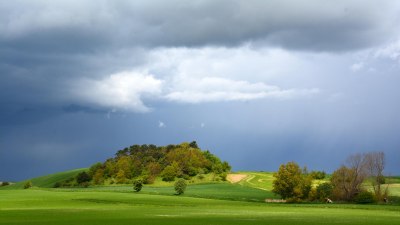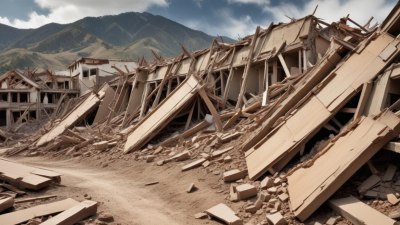Why You Always Start Biking Right Before the Wind Changes Direction
Explore the reasons cyclists face challenging winds and discover tips to manage wind effects on biking.

Image by rawpixel-com on Freepik
Cycling is one of the most enjoyable outdoor activities, allowing enthusiasts to explore new terrains, get exercise, and enjoy the fresh air. However, there's a peculiar phenomenon that many cyclists experience: just as they embark on a bike ride, the wind often seems to change direction, turning an exhilarating ride into an exhausting one. This article delves into the reasons behind this cyclical occurrence, the science of wind patterns, and offers practical tips for cyclists to mitigate the effects of shifting winds.
The Science of Wind Patterns
Understanding wind dynamics is crucial for cyclists. Wind is caused by differences in atmospheric pressure, which can change due to various factors, including temperature, terrain, and even human activities. These changes can create localized wind patterns that affect cyclists greatly.
When temperatures rise during the day, the ground heats up, causing the air above it to warm as well. Warm air rises and creates a low-pressure area, causing cooler air from surrounding areas to shift in. Similarly, as the sun sets, the ground cools, and winds often shift again. Cyclists who start riding during these times may unwittingly place themselves in the path of changing winds.
Common Wind Patterns Experienced by Cyclists
There are several wind patterns that cyclists should be aware of. One of the most common is the sea breeze, which occurs in coastal areas. When the land heats up during the day, the air above it rises, pulling in cooler air from the ocean. Cyclists starting their ride during this time may find themselves battling a brisk headwind.
Another scenario is the thermally induced winds that occur in inland areas. On hot days, the wind can shift dramatically as pockets of heated air rise. These shifting winds can lead to sudden changes in cycling conditions, causing frustration for those who enjoy a leisurely ride.
Additionally, topography plays a significant role in wind flow. Hills, trees, and buildings can all affect how wind travels. Riders on flat terrains with open spaces may experience stronger winds compared to those in wooded or hilly areas, as the latter can provide shelter from strong gusts.
The Psychological Aspect: Perception of Wind
Why does it feel like the wind changes direction right as you start biking? This perception is partly psychological. As you prepare for a ride, your body shifts into 'motor mode,' and your senses become heightened. You become more aware of your surroundings, including wind direction. If you notice a gust as you begin pedaling, it can feel more pronounced than when you're stationary.
Moreover, when cyclists face a sudden strong wind, it can create a feeling of resistance that feels disproportionately challenging. Cyclists may recall these moments vividly, leading to the belief that the wind always shifts as they start biking.
Tips for Cycling in Windy Conditions
Despite these challenges, there are effective strategies that cyclists can employ to navigate windy conditions. Here are some tips to help you manage and adapt to changing winds:
1. Check Wind Reports: Utilize weather apps or websites to check wind speeds and directions before heading out. Knowing the forecast can help you plan your route accordingly.
2. Choose Your Route Wisely: When possible, choose routes that offer natural windbreaks such as trees, buildings, or hills. If you know a certain area tends to be windy, consider adjusting your ride to avoid those zones.
3. Time Your Rides: Pay attention to the times of day when winds are typically calmer. Early mornings or late afternoons can sometimes offer a more pleasant riding experience than mid-afternoon rides.
4. Adjust Your Riding Technique: In windy conditions, adopting a lower, aerodynamic position can help reduce wind resistance. This can make biking more manageable as you cut through stronger gusts.
5. Dress Appropriately: Wind can make temperatures feel colder than they are. Wear wind-resistant clothing to protect against the chill while riding. Layering can also help you adapt as conditions change.
Wind and the Cycling Experience
Wind is an inevitable part of cycling, and while it can pose challenges, it also offers opportunities for growth and improvement. Learning to ride in different wind conditions can enhance a cyclist's skills and resilience. It promotes adaptability and encourages cyclists to rethink their approach and strategy, ultimately making them better riders.
Additionally, some cyclists find that overcoming windy conditions adds a thrill to their rides, as it presents an added challenge to conquer. Embracing these moments can lead to memorable experiences and stories to share with fellow cycling enthusiasts.
While it may seem like an unfortunate coincidence that the wind changes direction just as you're getting ready to bike, it’s a combination of scientific principles, psychological perception, and environmental factors at play. Understanding wind dynamics and following practical tips can enhance your cycling experience and help you tackle challenges head-on. Whether you're a casual rider or a competitive cyclist, acknowledging the role of wind will not only improve your performance but also enrich your overall cycling journey. So the next time you start pedaling and feel that gust of wind, remember it’s just part of the ride!











